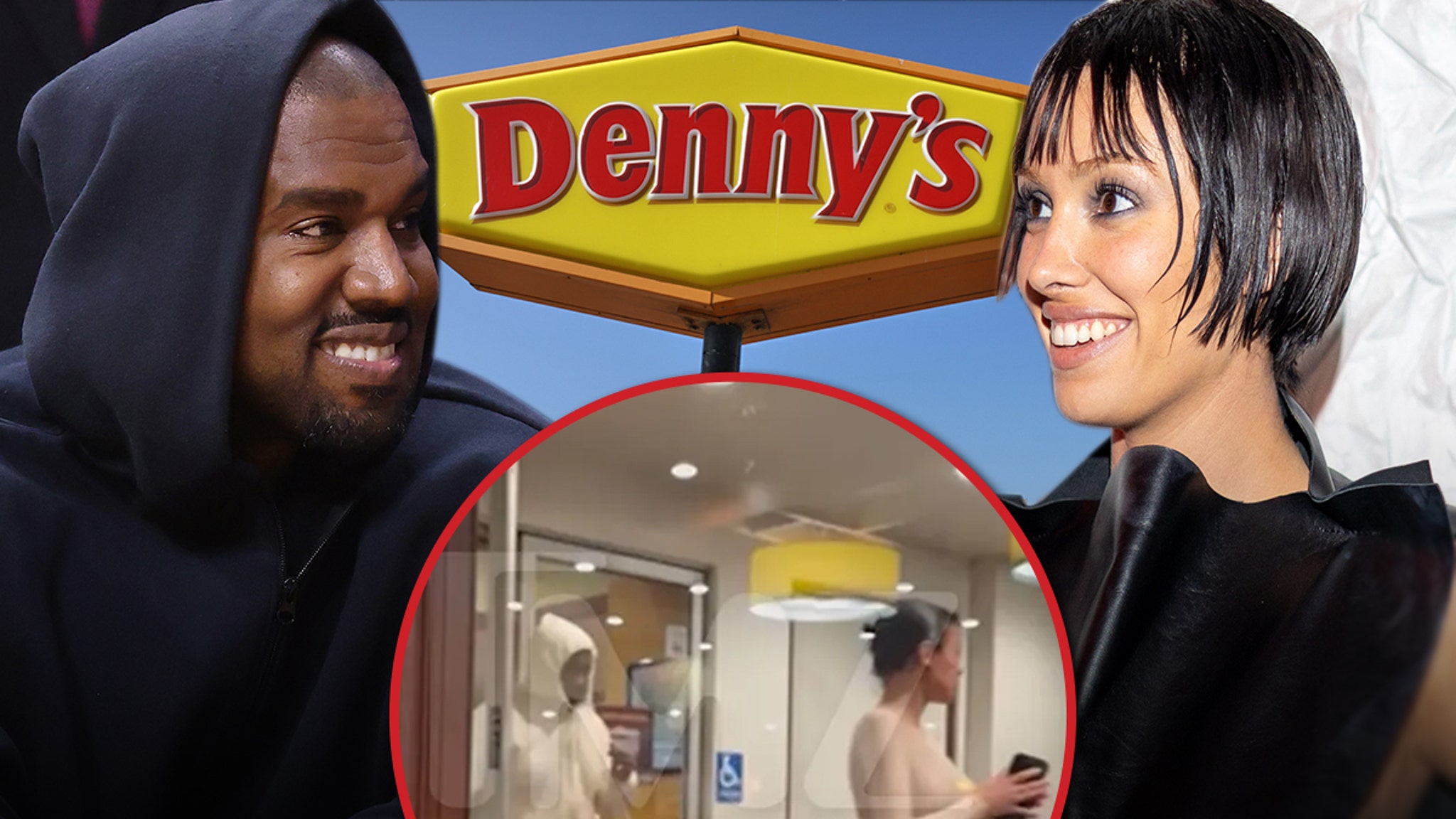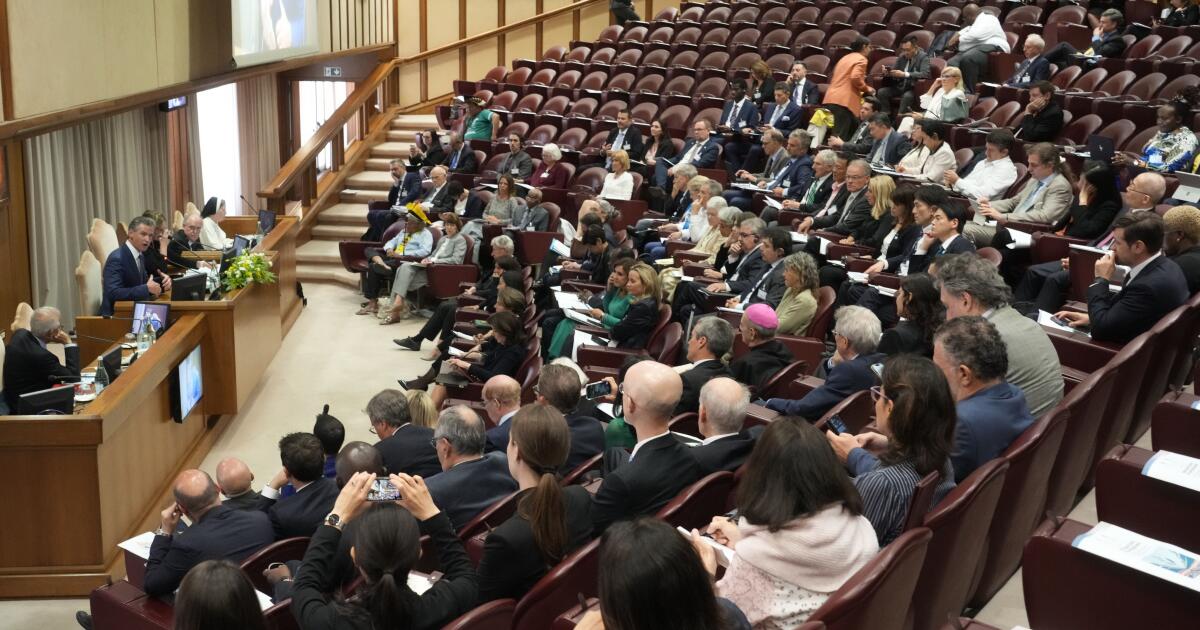Colorado
Wildlife officials aim to keep Colorado’s wolves from meeting the endangered Mexican wolf. Is separation the right goal?

A Mexican gray wolf called Asha wandered hundreds of miles across Arizona and New Mexico searching for a mate — no easy task for one of the most endangered mammals in the United States.
After five months of scouring hills and arroyos, she crossed Interstate 40 west of Albuquerque in the fall of 2022 and headed into the forests outside of Santa Fe. But when she traipsed across the interstate blacktop, she crossed an invisible boundary set by federal wildlife officials. As part of longstanding federal policy, any Mexican gray wolf found north of the interstate can be relocated — which is why Asha was darted and flown south, as documented in news stories and U.S. Fish and Wildlife Service reports.
The Mexican gray wolf subspecies has made a significant recovery over the last 25 years, but government biologists now worry that the reintroduction of the larger northern gray wolf in Colorado could derail that progress, should the two populations mix via wandering wolves like Asha.
Those worries prompted Colorado wildlife officials in September to sign first-of-their-kind agreements with New Mexico, Arizona and Utah. They will allow those states to relocate any roving northern gray wolves back to Colorado. The agreements will help keep the 10 wolves released in Colorado in December inside the state, crucial to establishing the self-sufficient population mandated by voters who approved reintroducing the species.
“This is not a typical kind of agreement for us to have between states,” said Eric Odell, the wolf conservation program manager at Colorado Parks and Wildlife. “It’s not common practice. Wildlife work usually involves geographic boundaries, not political ones.”
Much is at stake with the Mexican gray wolf. Its recovery took hold through an extensive, decades-long effort involving a captive breeding program, international transplantations and ongoing litigation.
The states’ recent agreements, coupled with the U.S. Fish and Wildlife Service’s I-40 policy, will create a buffer zone between the two wolf populations.
Without the precaution, Odell said intermixing could result in Colorado’s larger northern gray wolves taking dominant breeding positions in packs, changing the subspecies’ gene pool until they are indistinguishable. In effect, government biologists believe northern gray wolves likely would take over the Mexican gray wolf population.
“Having that hybridization would become detrimental to the Mexican wolf,” Odell said. “We’re working hard to keep (northern gray wolves) separate from those Mexican wolves.”
But conservationists question whether allowing the two to mingle would imperil the rare southern subspecies, and some say the Mexican gray wolf needs the northern gray wolf to survive. The wild Mexican gray wolf population suffers from a limited gene pool, so breeding with the northern gray wolf could help diversify the population.
“Historically, there was a spectrum of wolf species and subspecies from Mexico up to the Arctic Circle,” said Chris Smith, the Southwest wildlife advocate for WildEarth Guardians. “To have this wolfless zone between Colorado and Mexican gray wolves is a bizarre and arbitrary symptom of the politicization of our legal treatment of these wolves.”
A subspecies on the brink
The Mexican gray wolf — also called the lobo — is a smaller subspecies of the gray wolf that historically ranged across Mexico and into Arizona, New Mexico and Texas. The Mexican gray wolf is managed separately under the federal Endangered Species Act than the northern gray wolf, which numbers in the thousands across the northern Rocky Mountains and the Great Lakes region.
People nearly eradicated the Mexican gray wolf from both the United States and Mexico by the 1970s. Decades of unregulated hunting and targeted trapping by the federal government to protect livestock took their toll.
By 1977, there were only seven known remaining Mexican gray wolves in the two countries.
Wildlife officials returned the subspecies to the wild in 1998 and, after decades of management, at least 241 Mexican gray wolves now roam New Mexico and Arizona, according to the Fish and Wildlife Service.
The federal agency imposed the boundary along I-40, which cuts across the Southwest, in part because the documented historical range of the subspecies did not extend north of the interstate. Officials also faced pressure from ranching and hunting interests to restrict the recovery area.
But the wild population has a lack of genetic diversity.
Each wild Mexican gray wolf’s genes are as similar to the next as siblings’ genes would be, said Michael Robinson, a senior conservation advocate at the Center for Biological Diversity and the author of a book on wolf management.
Instead of creating a wolfless buffer zone, Smith and Robinson said, wildlife managers should introduce Mexican gray wolves into southwestern Colorado.
Those wolves then would breed with northern gray wolves and add much-needed genetic diversity to the subspecies, while minimizing the risk of the northern species’ genes taking over the Mexican gray wolf population. The risk to the Mexican gray wolf would be greater if northern gray wolves established themselves farther south in the core of the Mexican gray wolf’s habitat.
“We can try to approximate the gradation of wolf types that (once) existed from north to south,” Robinson said.
Wandering under watch
The technical working group that shaped Colorado’s wolf reintroduction plan considered reintroducing Mexican gray wolves here but found them the “least desirable” option.
The ballot measure that mandated Colorado’s reintroduction of wolves did not specify whether a subspecies could be reintroduced. But the group wrote in its final report that the Mexican gray wolf should be the lowest priority for reintroduction because Colorado was not part of its historical range. It also cited logistical management concerns due to the subspecies being managed separately under the Endangered Species Act.
“Because they are listed as a unique entity under the ESA, maintaining the genetic uniqueness of this subspecies is paramount,” the November 2021 report states. “If Mexican wolves were present in Colorado, premature interbreeding with wolves from the north could compromise the Mexican wolf recovery effort.”
It’s unlikely that Mexican gray wolves roamed in Colorado before their extirpation, but the subspecies is better adapted than the northern gray wolf to warmer, drier climates — which is the expected future for southwest Colorado as the climate shifts, Smith said.
“We have to recognize that we’re imposing not just political boundaries, but also pretty complicated legal frameworks on wildlife that do whatever they want on a landscape,” he said. “It’s a problem that we’ve painted ourselves into.”
Biologists have said that Mexican gray wolves need at least three separate but connected populations to thrive, Robinson noted. One study found that one of those populations should be located in southwest Colorado.
It would have made sense to keep the Mexican gray wolves separate when there were only a few dozen of them, Robinson said. But the population is now robust enough to allow some northern gray wolf genetics into the pack, he said.
While all of Colorado’s 12 current wolves — including two that predated the reintroduction effort — and the wolves released in the state in coming years will have radio collars, their progeny will not. That will make tracking whether the wolves have moved into neighboring states more difficult, Odell said.
“It’s not in perpetuity,” Odell said of the agreements with the other states. “We’ll revisit this in time and see how things are going.”
Get more Colorado news by signing up for our daily Your Morning Dozen email newsletter.

Colorado
After “riding the emotional roller coaster,” former Avs center Matt Duchene’s quest for a Cup includes knockout of former team

Of course it came down to the puck on Matt Duchene’s stick.
It figures because of his history in this building and this state.
It figures, too, because he had his fingerprints all over Game 6.
Double overtime. Running on fumes. A week that turned the Avalanche’s season upside down.
It’s been a long time since Duchene played for Colorado at this point (although, fans still boo him at Ball Arena). It’ll be a long time before he forgets this one. He just has to remember exactly what happened, first.
“I don’t even know. I think I ended up on my knees,” said Duchene, who did indeed drop to the ice, make a big heart shape with his arms and then punched through it before getting mobbed by his teammates. “I have no idea, to be honest with you. It’s just elation, right? Hard-fought series. They’re a hell of a team, obviously.
“They were really good the last two games and they pushed us.”
The 33-year-old was the No. 3 overall pick by Colorado in the 2009 draft, then played the first nine years of his career for the Avalanche before he asked to be traded and was eventually dealt for four players and three draft picks in November 2017.
Two times before he slammed home the game-winner from point blank range 91-plus minutes into the night, Duchene nearly helped the Stars to victory.
In the first overtime, he won a faceoff and posted up in front of the net, tussling with Cale Makar. Mason Marchment ripped a shot cleanly past Alexander Georgiev, but Duchene was called for interfering with Georgiev and the call withstood a long review.
“I haven’t seen the replay, really, of the no goal,” Duchene said. “I’ll leave it at that. I think you just stay with it. It can be a little tough to reset after you think it’s over and you hope it’s over. It’s a gut punch a little bit, but that’s what we do.”
Early in the second overtime, Duchene got a walk-in chance on Georgiev but couldn’t find the back of the net as the goaltender splayed out to make a stop.
Then, finally, he put Dallas into the Western Conference Final. He’s rarely been part of a run like this during his 15 seasons.
That’s nine years in Colorado, one-plus in Ottawa, a stretch run in Columbus and four in Nashville before signing with the Stars in the offseason.
“At 33, I think there’s a certain level of appreciation that you have that you wouldn’t have had as a young player,” Duchene said. “… I probably let it stress me out more than it’s been fun at times just because you want it so bad, but I’m starting to relax a little bit more and it’s getting to be a lot of fun as we go on here.”
Now the Stars are into the final four and the veteran center will be a key part of the puzzle as they try to find eight more wins.
“Really happy for ‘Dutchy’. He’s ridden the confidence roller coaster here in the second half (of the season),” Stars coach Pete DeBoer said. “Some high highs and some low lows. It was probably about as low as he could be after Game 5. That’s why our group is special. I thought they rallied around him and he was maybe our best player tonight.”
Want more Avalanche news? Sign up for the Avalanche Insider to get all our NHL analysis.
Colorado
Documentary on fentanyl crisis premieres in Colorado

COLORADO SRPINGS, Colo. — The film’s director stresses, “We can do something about it.” A Colorado-produced documentary takes a hard, in-depth look at the fentanyl crisis in our state.
WATCH: A check back in on Fentanyl data in Southern Colorado
With the financial backing of Weld County rancher Steve Wells, Mountain Time Media spent the past 18 months creating Devastated: Colorado’s Fentanyl Disaster.
News5 spoke with the documentary’s director, Steffan Tubbs. Below are excerpts from that interview:
“Putting this film together, the one thing that I had to do as a filmmaker was to give justice to the families, the family members that you know decided to talk with a complete stranger and talk about their most devastating moments of their lives. And the one thing that has never been lost on me and I think will stick with me the rest of my life is these families in Colorado wanted to share their stories in hopes that other Colorado families would never ever have to experience the grief that they’ve gone through.”
“When you have children, they are your most precious asset. And my two sons are in their early 20s. And we focus on young teenagers that are never going to see their 21st birthday. And I think just as a concern Coloradan most certainly as a concerned father. So as a parent, I would just urge you, you don’t even have to like the film, but have the discussion. And the one thing that I will always have with me from these parents is yeah, it may be a tough conversation to have. But you’d rather have the tough conversation than plan a funeral.”
“We’ve got to crack down. And I will say… one of the leading prosecutors in the state of Colorado against the fentanyl epidemic, not thinking that the drug cartels are victims here, or drug dealers are victims, and that is Colorado’s fourth Judicial District Attorney Michael Allen… He understands it in the Colorado Springs area. The Fourth Judicial District, you all understand most of the prosecution’s dealing with fentanyl and fentanyl-related deaths or death resulting cases as they call it. It’s happening in Colorado Springs, we need to take that model, and we need to have it go coast to coast. This is not going away. The problem is only getting worse. And we can either all stand by and watch and go to another funeral in Colorado. Or we can do something about it.”
The film premieres in Colorado Springs May 18. The premiere is sold out, but anyone interested in watching the film can watch it onlinefor free.
____
News Tips
What should KOAA5 cover? Is there a story, topic, or issue we should revisit? Have a story you believe should make the light of day? Let our newsroom know with the contact form below.
____
Watch KOAA News5 on your time, anytime with our free streaming app available for your Roku, FireTV, AppleTV and Android TV. Just search KOAA News5, download and start watching.
Colorado
Fieldside Chat | Midweek check-in with Cole Bassett and Chris Armas | Colorado Rapids

On the win over Vancouver
It was another tough game for us. We came out ahead on the night against a good team, it’s nice to see the boys win in a different way, to manage the game the way they did. After halftime being up a man, I thought it was a mature performance in the second half, which is never easy just because you’re up a man. I saw some good stuff there in the second half and we had a lot of control. Yes, it’s a shutout, which is really important. It’s a victory here for us at home. The fans once again came out. Pride night is so important to our club, to so many of our fans, and to our team. So yes, even extra special on the night. We look forward to a few days from now. We know what’s coming up.
On the upcoming contest with Real Salt Lake to clinch the Rocky Mountain Cup
I wish we were hosting this one. This Rocky Mountain Cup is such an important cup to us as a team and to our fans. It would have been nice if maybe we played one on the road and then one at home, or one home and one on the road. To have the first two on the road, it’s tricky but that’s what it is. The fact that we have the slight edge at the moment is what it is, it’s an edge. We have a lot of work to do to go there and get the trophy. However, I think you can go through an entire season and not really play for a trophy, and now we are 12 games in or so. The fact that we have a chance to bring one home this early in the season, that we’ve put ourselves in that spot, is a really big positive. We know Salt Lake, they’re a really good team. We’ve played them and we’ve gotten a look at them, but they also have managed a busy week. What team do they put out? It’d be hard to predict that and then even prepare in detail without knowing exactly who they’re putting out with two days [to go]. I think the most important thing is that we went there, we had a victory, and the guys have some confidence that we can go there again. To be clear, we will be going after that. It’s important to our fans. After the match tonight, I can’t say how many were chanting “Beat Salt Lake”, so we will go after them with everything that we have. I can promise our fans that.”
On the significance of winning the Rocky Mountain Cup to Rapids Homegrowns
If you ask those guys, they’ll tell you there’s extra motivation. Every game is a game, but it means a lot to our Homegrowns in our club, it’s ingrained in their blood and what they’ve been brought up with through here. It means a lot to our club, our Unified Team is gonna go for it as well. We’re going for it. Our Homegrowns are always extra motivated for that one. We have a lot of respect for what they’re doing. But we will go there, no doubt to try to bring home the win.
On Connor Ronan, Jonathan Lewis getting back from injury, updates to Djordje Mihailovic’s condition after being subbed off against Vancouver
Always good getting guys healthy, getting guys back on the field, getting the minutes to get deeper in the roster. I trust the guys that we have. You can see that that each of them brought what we thought. [Jonathan Lewis] all of a sudden becomes a guy in transition and in spaces can make something happen, and in those moments and we need to do better. But it’s good to see him back out there. And of course, I think we can all appreciate Connor Ronan’s quality that in that very moment, that he helps control things even more in the middle of the pitch, his decision-making and we’ve missed that. It was good that we could use that on the night. With Djordje Mihailovic, I haven’t gotten all the details yet, but it looks like right after the shot he felt that heel [injury] which is what he was battling recently. I would say it’s fairly minor and we’ll have to see how that responds.
-

 World1 week ago
World1 week agoPentagon chief confirms US pause on weapons shipment to Israel
-

 Politics1 week ago
Politics1 week agoRFK Jr said a worm ate part of his brain and died in his head
-

 Politics1 week ago
Politics1 week agoOhio AG defends letter warning 'woke' masked anti-Israel protesters they face prison time: 'We have a society'
-

 News1 week ago
News1 week agoNine Things We Learned From TikTok’s Lawsuit Against The US Government
-

 Politics1 week ago
Politics1 week agoBiden’s decision to pull Israel weapons shipment kept quiet until after Holocaust remembrance address: report
-

 Education1 week ago
Education1 week agoVideo: Police Use Pepper Spray on Protesters on G.W.U.’s Campus
-

 World1 week ago
World1 week agoA look at Chinese investment within Hungary
-

 News1 week ago
News1 week agoThe Major Supreme Court Cases of 2024


















